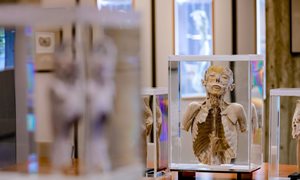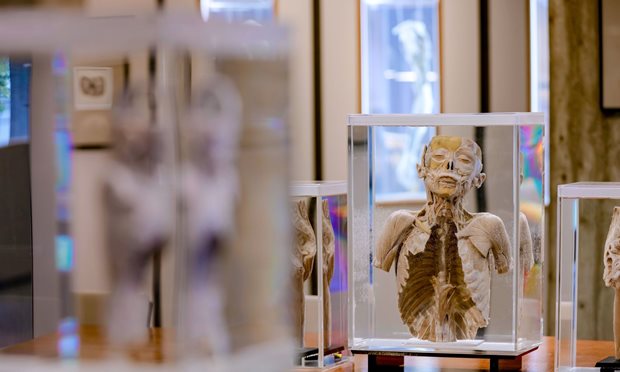

About us Department of Anatomy
The research of the Department of Anatomy focusses on vascular risk factors for neurodegenerative diseases like Alzheimer Disease and the impact of nutrition on brain structure and function from mouse to men. read moreAbout us Department of Anatomy
The research of the Department of Anatomy focusses on vascular risk factors for neurodegenerative diseases like Alzheimer Disease and the impact of nutrition on brain structure and function from mouse to men.
he research is performed in the Preclinical Image Center PRIME in the animal facilities of the Radboudumc where cutting edge translational neuroimaging data is combined with behavior, cognition and motor skills in mouse models for hypertension stroke obesity and Alzheimer’s.
The ongoing human studies comprise a post mortem neuroimaging study on cerebral small vessel disease in human brains from people who had chronic hypertension during life and a neuroimaging study on Influence of Bariatric Surgery on cognition and brain structure in morbid obese persons (BARICO study).
Contact

prof. dr. Amanda Kiliaan PhD
head of department
+31 (0)24 361 33 41
contact form
Histology Facilities and services
In the histology lab of the department of Anatomy tissue is prepared for qualitative and quantitative analysis. read moreHistology Facilities and services
In the histology lab of the department of Anatomy tissue is prepared for qualitative and quantitative analysis. Most tissue is collected from experimental animal studies. These studies are performed at the central animal laboratory of Radboud University after approval of the animal experimental committee.
Human tissue
In addition, research is carried out on human tissue, this is in collaboration with the clinic (department of Neurology, department of Pathology, department of Orthodontics and Oral Biology). Using histological techniques, we aim to demonstrate differences in morphology or in amount and/or location of specific proteins in these tissues. In this way, we hope to get more insight in several physiological processes.
Conservation
For the conservation of the experimental animal tissue, we use the perfusion technique. In order to be able to do histology, the fixed tissue is cut in sections. Depending on the histological technique, we use a rotation microtome, sliding microtome, cryostat, vibrating blade microtome and/or an utramicrotome to slice the tissue. Besides the standard staining techniques, specific immunohistochemical stainings and in situ hybridisation techniques are performed in our lab.
Analysis
By comparing the stained sections of different individuals with each other, differences between experimental groups can be elucidated. For the analysis, a computerized image analysis system is used (Neurolucida or Stereo Investigator, MicroBrightField). For the presentation of the results, equipment is available to make (digital) macro-and microphotographs.

